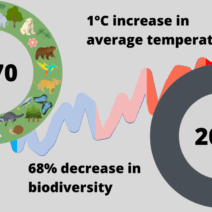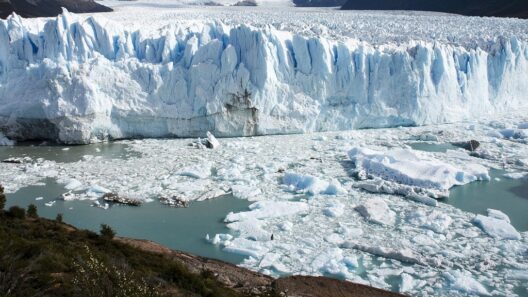Deserts, often likened to vast oceans of sand, boast an allure that is both captivating and harsh. They challenge the very tenets of life. A desert climate is characterized by its extreme aridity, a relentless sun, and wide temperature swings. Understanding this unique ecosystem requires delving into its fundamental components: temperature, precipitation, humidity, and adaptation of flora and fauna.
At first glance, a desert appears stark, devoid of life. Yet beneath its sun-scorched facade lies a complex tapestry of survival. The average annual precipitation in deserts is often less than ten inches, a mere trickle compared to more temperate environments. This scarcity of moisture dictates everything—from the prevailing weather patterns to the types of life forms that can flourish. The dry air can create atmospheric mirages, deceiving travelers into believing they see water where there is none—a poignant metaphor for the illusions of safety amidst perilous situations.
Temperature fluctuations in deserts are often dramatic. By day, the sun reigns supreme, scorching the surface to temperatures that can exceed 120°F. The heat is so intense that it appears to shimmer above the ground, creating a surreal landscape. As night falls, the temperatures plunge, sometimes dropping to freezing. This dichotomy paints a picture of a climate that is both unforgiving and beautiful, akin to a fierce warrior laying down its armor only to reveal its vulnerable side.
Humidity levels in desert climates are strikingly low, frequently hovering around 10% or even lower. This lack of moisture contributes to the aridness and influences the behavior of its inhabitants. Many organisms have developed remarkable adaptations to withstand the extreme conditions. Cacti, for instance, are the sages of the desert, storing water in their thickened stems while their spines deter hungry foragers. This clever trait exemplifies the grace with which life can adapt to adversity. The dry, desiccated soil, often rich in mineral deposits, serves as a reminder that life is tenacious, pushing through the harshest of circumstances.
Surviving the extreme heat and dryness of the desert demands a wealth of knowledge and resilience. For humans, the key to thriving in such an environment lies in preparation and resourcefulness. Whether it’s ancient nomadic tribes or modern-day adventurers, understanding the desert’s rhythms is essential. Mastery over hydration is paramount. Carrying ample water supplies and recognizing the signs of dehydration can mean the difference between life and death. Traditional methods often resurface, such as using clay pots to store water, allowing it to cool through evaporation, reminiscent of the ingenious tactics employed by our ancestors.
Moreover, protecting oneself from the relentless sun is crucial. The use of light-colored, loose-fitting clothing helps to reflect sunlight rather than absorb it. Creating shade during the hottest part of the day—often referred to as the ‘solar zenith’—is another tactic. This can be accomplished with natural formations like rocks or artificial means like tarps. Inscrutable as it may seem, timing is of the essence; many desert dwellers operate during twilight and dawn, harnessing cooler temperatures to conserve energy and safeguard against the midday blaze.
The biodiversity that exists in desert climates is nothing short of astonishing. Flora and fauna exhibit surreal adaptations that echo the desert’s stark beauty. The fennec fox, with its oversized ears, acts as a natural radiator, dissipating heat. Meanwhile, plants such as the creosote bush have adapted to withstand prolonged droughts by exuding a resin to coat their leaves, preventing water loss. There lies an unspoken bond among these organisms, a symbiotic relationship that thrives amidst the dust and decay. Each species embodies resilience, collectively forming an ecosystem that thrives against all odds.
As we navigate complexities in our modern world—climate change, environmental degradation, resource depletion—the desert offers an intriguing parallel. Much like the creativity of its inhabitants in overcoming harsh conditions, society must cultivate adaptability. New technologies, sustainable practices, and an emphasis on preservation are essential in tackling the challenges we face. The desert’s lessons are manifold: it teaches patience, survival, and the importance of community. Like an oasis in a sea of sand, innovative solutions can emerge amidst adversity.
As dusk transforms the desert sky into a canvas of fiery oranges and tranquil purples, one cannot help but admire its raw magnificence. Beneath the celestial display, the desert continues to pulse with life, a testament to both fragility and strength. Individuals venturing into this formidable realm learn survival skills intimately linked with humility and respect. The desert, in all its paradoxes, is a reminder of nature’s power and our role within it.
In conclusion, the essence of desert climate lies intricately woven within its extremes—its vapid aridity and inhospitable conditions juxtaposed against the tenacity of life and the awe-inspiring beauty of its landscape. Understanding and respecting these environments is paramount in fostering a culture of sustainability and survival in a changing world. As we tread lightly upon this fragile ecosystem, let us carry forward the lessons gleaned from the desert: to thrive in adversity is to embrace the unique whimsy and wisdom of nature.








